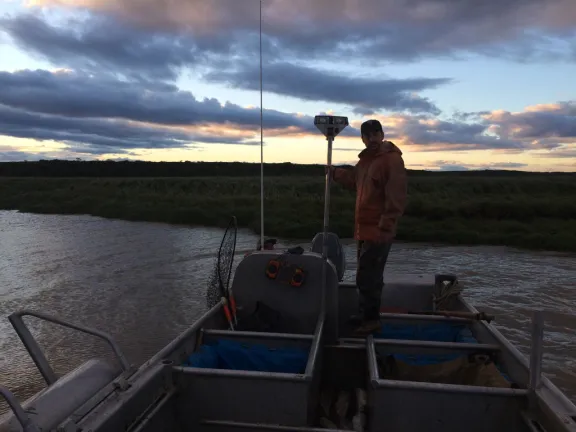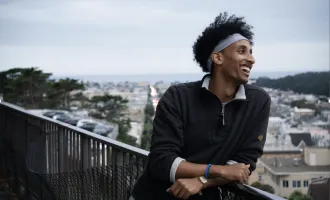
The Highs and Lows of Healing in Alaska
It’s a typical night in the Emergency Department of a community hospital; after seeing an early-evening influx of patients with breakthrough migraines, asthma exacerbations and chest pain, we’ve reached the witching hour of 3 AM and things have quieted down. The long-suffering ED nurse is rubbing his eyes with the palm of his hand and opening his second Coke Zero. After answering all of my badgering medical student questions, the on-duty physician is about to call it a night. Then the phone rings.
“Doctor? This is the clinic. One of our elders won’t stop vomiting and we can’t get an IV in.”
Such a call from anywhere else in the United States would usually involve an ambulance, an ED visit, and possibly an inpatient stay. This call, however, is being made from a rural village in Southwest Alaska, hundreds of miles away from the hospital. Like the majority of Alaska Native villages, there is no road to the hospital. All transportation is by small propeller airplanes, and the hospital has a medevac plane on hand for such emergencies.
This call gets many systems moving at once. At the same time that the physician is talking with the village Community Health Aide, the nurse is calling up the volunteer EMTs on duty that night and the pilot of the medevac flight. The Health Aide explains that the elder cannot hold down any of the oral medicines that she’s tried giving him, and, unable to get an IV in, she’s afraid that he is quickly dehydrating.
The physician tells her he’ll call her back, and consults with the nurse, who has learned from the medevac pilot that the weather is marginal. Kanakanak Hospital is located in Dillingham, Alaska, on the coast of Bristol Bay, where winds can gust up to sixty miles an hour and fog can move in quickly. Small plane crashes are an all-too-frequent event here.
Despite this, the pilot says he’s game to fly tonight, but the physician judges it too dangerous. He gets back on the phone with the Health Aide, and asks her to try the IV one more time. The well-trained Health Aide manages to find a vein, administers some IV Toradol, and starts to rehydrate the patient.
The physician sits back and rubs his temples. “Radio traffic.”
Making do
“Some people will ask what the biggest change is, and it is communications. There were no telephones, if you can imagine that. We communicated with Anchorage rarely by phone, but mostly with teletype, like you see in those old World War II movies.”
I spoke with Dr. Daniel O’Connell in his hand-built house in Dillingham. Thinning hair and a hunched posture due to spinal fusion belied the spry form of a long-distance runner. He explained to me the evolution of village communication in rural Alaska since his start as a physician out here in 1963. Teletype quickly went the way of the dodo, but one technology stuck around.
“Radio. That’s why they call it radio traffic.”
Radio traffic these days consists of physicians calling their designated villages every day. Towns with names like New Stuyahok, Perryville, and Manokotak have clinics that are staffed by Community Health Aides, community members that are trained to do basic examinations and administer medications under the supervision of physicians. Back before telephone lines were installed around Southwest Alaska, doctors called Health Aides over the short and long-wave radios.
“They used what they call AM sets. Big tall things, with tubes and noises and crackles and it was weather dependent. It was dicey communication. Then we got single side bands which was a big help then. In the ‘80’s we got telephones, and then we got faxes, and now everything is on computers.”
Nowadays, radio is still in heavy use, but mainly for communication during the summer salmon fishery, a major driver of the economy in Bristol Bay. O’Connell explained that telemedicine, one of the trendier topics in healthcare these days, has been in use for decades here as there was literally no other option.
O’Connell said that this spirit of resourcefulness was essential in his work as a rural physician in Alaska. Back in the ‘60’s, he worked in a hospital in Bethel, one of the other larger rural towns, and had to make do with what he had as there were no regular flights into the bigger city of Anchorage. Performing emergency caesarean sections and appendectomies was routine, as well as managing devastating outbreaks of infectious disease.
“We delivered 350 kids a year in Bethel at that time… We had an E. coli epidemic that went through one year, and ten percent of those kids died. We had 33 kids die from E. coli.”
O’Connell sat back in his easy chair. When I asked him what has accounted for the better health of the surrounding communities, he smiled.
“[Community Health Aides] have been one of the most fantastic changes in healthcare here.” In 1965, there were two postpartum deaths in a village named Chevak, orphaning several children. The community had had enough; calling in physicians, women of the village received training in delivery and basic medical care, and set up a consultation relationship with doctors in the nearby towns. Thus the Health Aide program was born.
“I don’t think that anyone I know of has died of a postpartum hemorrhage since that time.”
Medicine for family
The Bristol Bay area is home to the Yup’ik people, one of the larger groups of Alaska Natives in the state. They live on the bays, streams and sprawling tundra in rural villages of hundreds of people, and subsist off of the land through hunting, fishing, and berry picking. It’s small town living; people know each other, and very often have family ties.
Kanakanak Hospital is staffed exclusively by family doctors, and probably no one understands the “family” aspect of that title quite as well as Dr. Barbara Lee Riley, who I interviewed when she came in from her house down the road to check on a patient.
Riley, whose purposeful, businesslike voice and smile lines around her eyes embody both doctor and parent, explained patiently that she was not the first Alaska Native physician, but the first practicing Alaska Native physician. Taking my star-struck silence for a question, she said that she was born in the building we now sat and raised in Dillingham, where her family had lived for generations. Despite her current status as a community leader, she said that she had not expected to come back after medical school.
“I never thought I would come back to Dillingham, but I knew I would come back to Alaska.”
She met her husband in medical school, and it was at his urging that they moved back to her hometown. Riley made a deal with him.
“[I told him that] I would be willing for us to stay in Dillingham for one year, for me to determine whether or not the people I grew up with and their families would listen to me as a doc. That was in 1984, and we’re still here.”
Riley attributed her longevity to being able to set clear boundaries between her personal and professional lives, something she recommended to burgeoning physicians. She never treats family, except in emergency situations. She admitted that sometimes it’s tough.
“When I go in, they might say ‘Hi Auntie Barb,’ then they will say ‘Dr. Riley.’ They know when they see me out here at the hospital, they still show me respect by calling me Dr. Riley. When I’m at a potluck it’s Auntie Barb, or Sister.”
Riley said the upside of living and working in a rural place is huge. She draws support and strength from her community and the traditional lifestyle that is practiced out here. It also aids her in the practice of medicine; knowing your community means you can make informed medical decisions. She also credits it with her overall happiness.
“I think those of us who have been here a long time…we like the lifestyle. We like being able to get in a boat and go places. We like being able to subsistence fish, subsistence hunt. We like picking berries. And we like the small town atmosphere, where you know a lot of people, and make friends outside of medicine. We think that that’s important.”
A personal rotation
The decision was made—no medevac tonight, and the patient was improving. The physician I was following decided to go get a few hours of sleep, and it was time for me to go home. I walked out of the red tin-roofed hospital towards my car, a red 1984 Toyota station wagon that my mom just can’t bear to get rid of. After a couple of turns of the key, the engine started up and I drove back towards my cabin.
I looked to my right as I drove down the road. A few winking lights out on the bay indicated that there were still a few late-season fisherman eking out a late-night catch. My family had ended our fishing season a week ago, storing our little 22-foot aluminum skiff for next summer. This was the 30th fishing season for my parents in Bristol Bay, and probably close to my 15th with my brother and me running the boat. Like the red salmon that we catch, we return every summer to work in this beautiful place. I felt a pang of remorse; I’ll be missing my first season in years this upcoming summer due to rotations in the third year of medical school.
My regret was tempered as I reflected on the level and depth of medical care I had been able to witness this summer at this rural hospital, care I was able to benefit from 27 years ago, when I was born here. The resourcefulness, community, and stories that were shared with me here are things that I’ll bring with me from this place.
As Dr. Riley said, “That’s what’s fun about living in rural Alaska, you know. The sharing.”


